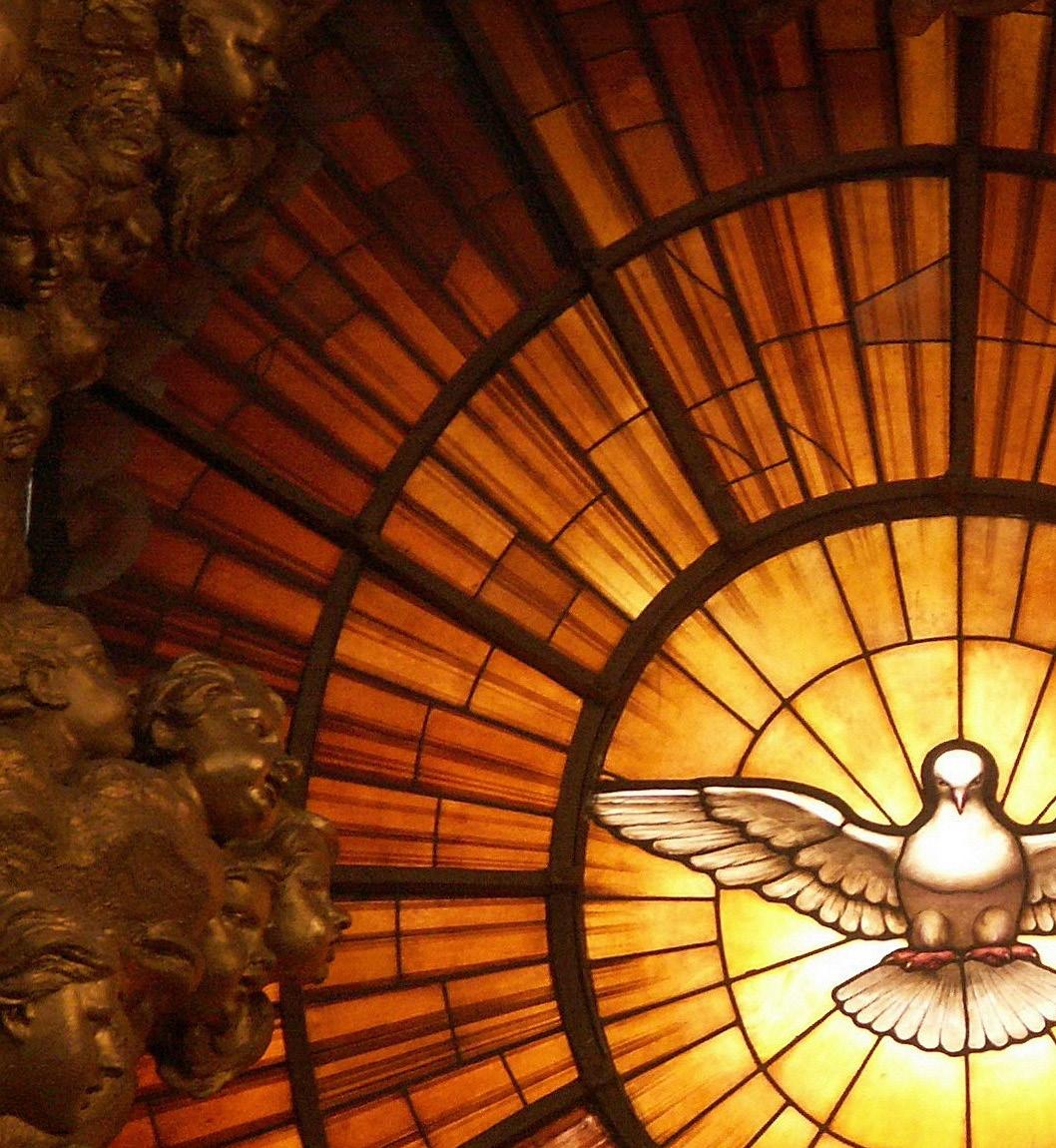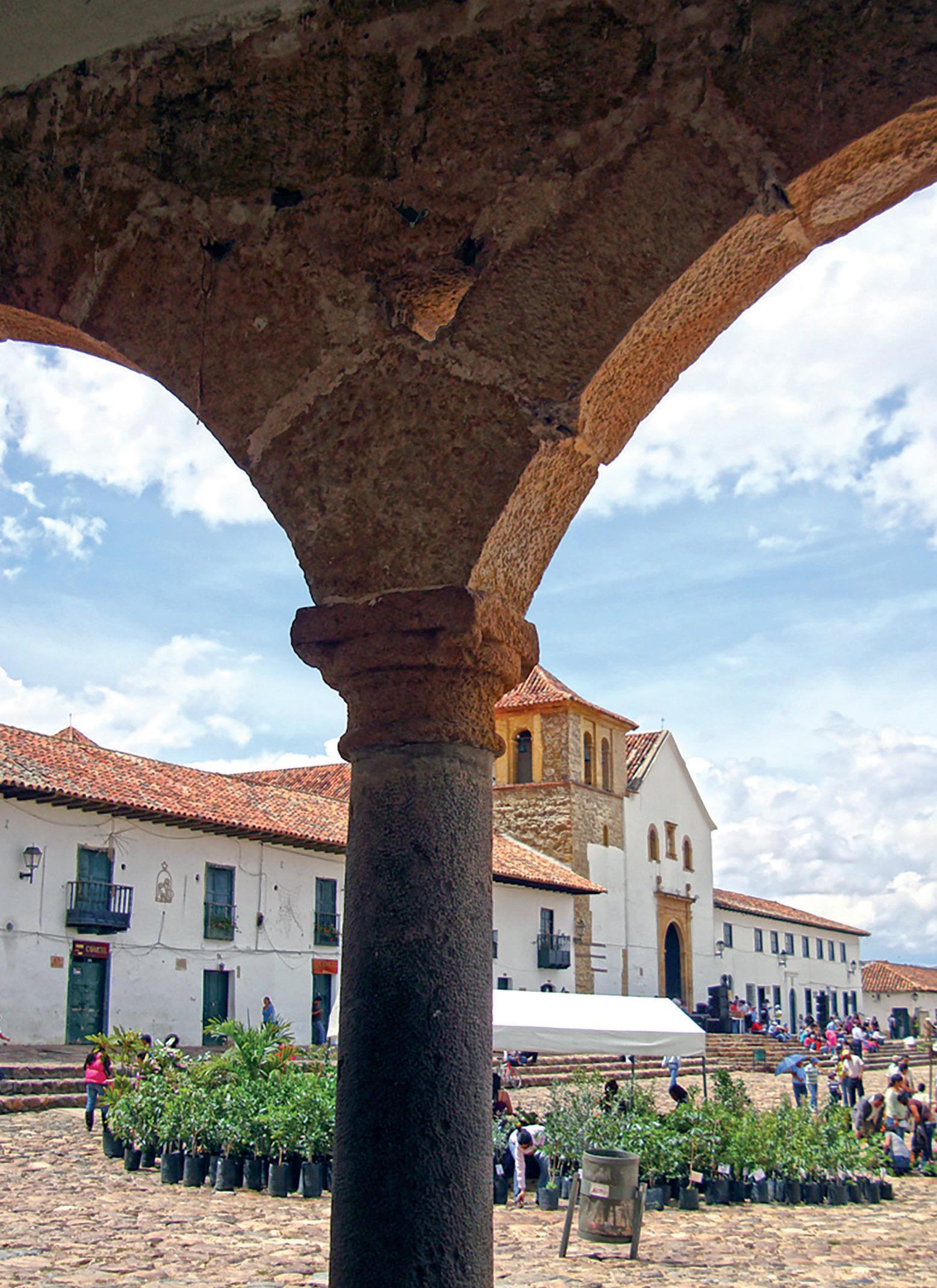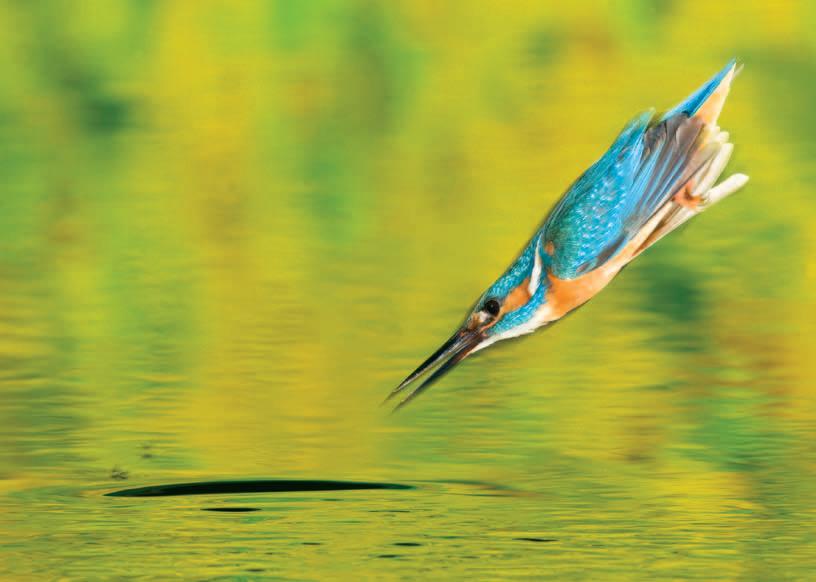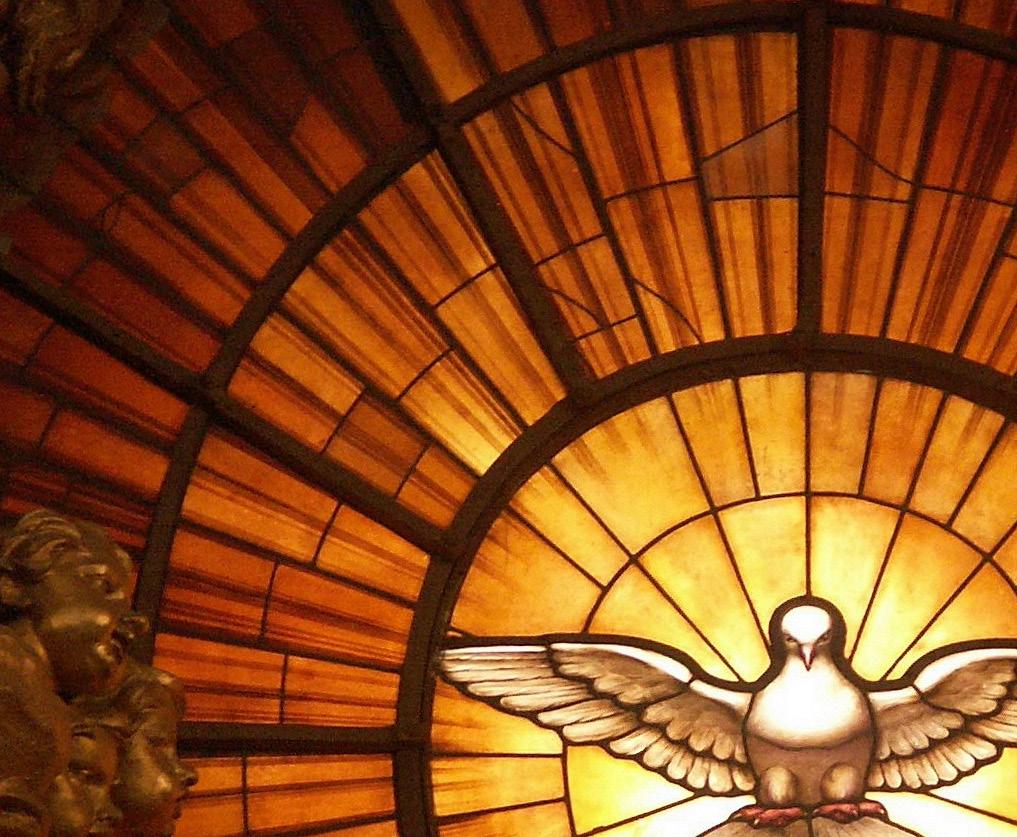

Having a faith conversation with old and new friends is as easy as setting the table.
FAITH FEEDS GUIDE HOLY SPIRIT
CONTENTS
Introduction to FAITH FEEDS 3
Conversation Starters 6
• Guided by the Holy Spirit by Richard Lennan 7 Conversation Starters 8
• Todo Dios Es: All Is God by Sacha Hauc 9 Conversation Starters 11
• Revisiting the Catholic Imagination by Paul Mariani 12
Conversation Starters 14
• Gathering Prayer 15
FAITH FEEDS GUIDE - HOLY SPIRIT | 2 BOSTON COLLEGE | THE CHURCH IN THE 21ST CENTURY CENTER


The C21 Center Presents
The FAITH FEEDS program is designed for individuals who are hungry for opportunities to talk about their faith with others who share it. Participants gather over coffee or a potluck lunch or dinner, and a host facilitates conversation using the C21 Center’s biannual magazine, C21 Resources.
The FAITH FEEDS GUIDE offers easy, step-by-step instructions for planning, as well as materials to guide the conversation. It’s as simple as deciding to host the gathering wherever your community is found and spreading the word.
All selected articles have been taken from material produced by the C21 Center.
FAITH FEEDS GUIDE - HOLY SPIRIT | 3 BOSTON COLLEGE | THE CHURCH IN THE 21ST CENTURY CENTER

FREQUENTLY ASKED QUESTIONS
Who should host a FAITH FEEDS?
Anyone who has a heart for facilitating conversations about faith is perfect to host a FAITH FEEDS.
Where do I host a FAITH FEEDS?
You can host a FAITH FEEDS in-person or virtually through video conference software. FAITH FEEDS conversations are meant for small groups of 10-12 people.
What is the host’s commitment?
The host is responsible for coordinating meeting times, sending out materials and video conference links, and facilitating conversation during the FAITH FEEDS.
What is the guest’s commitment?
Guests are asked to read the articles that will be discussed and be open to faith-filled conversation.
Still have more questions? No problem! Email karen.kiefer@bc.edu and we’ll help you get set up.
FAITH FEEDS GUIDE - HOLY SPIRIT | 4 BOSTON COLLEGE | THE CHURCH IN THE 21ST CENTURY CENTER

READY TO GET STARTED?
STEP ONE
Decide to host a FAITH FEEDS. Coordinate a date, time, location, and guest list. An hour is enough time to allocate for the virtual or in-person gathering.
STEP TWO
Interested participants are asked to RSVP directly to you, the host. Once you have your list of attendees, confirm with everyone via email. That would be the appropriate time to ask in-person guests to commit to bringing a potluck dish or drink to the gathering. For virtual FAITH FEEDS, send out your video conference link.
STEP THREE
Review the selected articles from your FAITH FEEDS Guide and the questions that will serve as a starter for your FAITH FEEDS discussion. Hosts should send their guests a link to the guide, which can be found on bc.edu/FAITHFEEDS.
STEP FOUR
Send out a confirmation email a week before the FAITH FEEDS gathering. Hosts should arrive early for in-person or virtual set up. Begin with the Gathering Prayer found on the last page of this guide. Hosts can open the discussion by using the suggested questions. The conversation should grow organically from there. Enjoy this gathering of new friends, knowing the Lord is with YOU!
STEP FIVE
Make plans for another FAITH FEEDS. We would love to hear about your FAITH FEEDS experience. You can find contact information on the last page of this guide.
FAITH FEEDS GUIDE - HOLY SPIRIT | 5 BOSTON COLLEGE | THE CHURCH IN THE 21ST CENTURY CENTER

CONVERSATION STARTERS
Here are three articles to guide your FAITH FEEDS conversation. We suggest that you select two that will work best for your group, and if time permits, add in a third. In addition to the original article, you will find a relevant quotation, summary, and suggested questions for discussion. We offer these as tools for your use, but feel free to go where the Holy Spirit leads. Conversations should respect and ensure confidentiality between participants.
This guide’s theme is: Holy Spirit
FAITH FEEDS GUIDE - HOLY SPIRIT | 6 BOSTON COLLEGE | THE CHURCH IN THE 21ST CENTURY CENTER
Guided by the Holy Spirit
Richard Lennan
Theologian Richard Lennan argues that the course forward for the Church must be charted by the cultivation of intentional discernment, memory, and Christian hope. Together they will ensure that the Church is moving according to the direction and under the guidance of the Holy Spirit.
Tt he renewal of integrity in the Church requires more than individual pieces of reform: it requires broad and deep cultural shifts. To achieve the latter, it will be necessary for the Church to embrace an overarching approach to change, one that can guide the integration of specific changes. Here, the key question is what might provide such an approach.
A principal aspect of a satisfactory answer to that question is that the ongoing discernment of God’s desires for God’s people must become the norm for the Christian community. Broadly speaking, the sole non-negotiable in the life of the Christian community is the obligation to be responsive to God’s Holy Spirit at the heart of the Church. The Spirit promotes only what is conducive to God’s reign and the good of God’s people. Every aspect of the Church’s life, from how we interpret the Scriptures and our forms of worship, to the goals we set for our structures and ministries at every level of the Christian community, must continually find its rationale in relation to discernment of the Spirit.
Discernment is the polar opposite of idolatry. As Pope Francis describes it, discernment “is not a solipsistic self-analysis or a form of egotistical introspection, but an authentic process of leaving ourselves behind in order to approach the mystery of God” for the sake of our mission in the world (Gaudete et Exsultate, article 175).
In urging the members of the Church to cultivate practices of discernment, Pope Francis stresses that discernment “is not a matter of applying rules or repeating what was done in the past, since the same solutions are not valid in all circumstances and what was useful in one context may not prove so in another. The discernment of spirits liberates us from rigidity, which has no place before the perennial ‘today’ of the risen Lord. The Spirit alone can penetrate what is obscure and hidden in every situation, and grasp its every nuance, so that the newness of the Gospel can emerge in another light” (Gaudete et Exsultate, article 173).
Those of us who believe that God’s grace is inextricably linked to the Church, that it does sustain the Church’s mission in history, long for the community of faith to be a transparent witness to that grace, to be
a community that reflects thoroughly and consistently the boundless compassion, justice, and reconciliation expressive of the God of Jesus Christ. Even more, we long for that to be true of all of us, every day, and in our every action. The reality of the Church is, of course, otherwise. Nor are the failures of the Church a new story. Nor have the Church’s sins remained only within its own community, but have, indisputably, brought about the sufferings of others. That truth is one that we must never seek to escape or deny.
Remembering, however, is insufficient on its own. We must remember with intent. Johann Baptist Metz, in the context of discussing the task of theology after Auschwitz, explains what “remembering with intent” implies: “Christian theology must be able to perceive history in its negativity, in its catastrophic essence … If this perception is not to turn tragic—that is, develop into a farewell to history—then these catastrophes must be remembered with practical and political intent (A Passion for God, 40). Our remembering, then, must drive a commitment to change, must not dissipate itself in either despair or a casual retreat into “business as usual.”
A future for the Church, a future that offers an alternative to self-deception, and a future in which the Christian community might become not perfect, but less equivocal in its witness to all that God enables, will not be the product simply of our will-power, or even our best desires. Rather, it can come only from recovering the hope we have in the crucified and risen Christ, the hope “that does not disappoint us, because God’s love has been poured into our hearts through the Holy Spirit that has been given to us” (Rom 5:5). This hope is not a soft option.
As a Church we must not turn away from the devastation that clerical sexual abuse and episcopal malfeasance have caused; we must remember it with the intent to reform our community and its ministry. We must also, all of us without exception, open our own hearts and actions to the transformation that God’s Spirit seeks and empowers. What difference all of this will make, whether it will aid the healing of survivors of abuse, and whether it will enable some reconciliation with the Church for the many people who have walked away in understandable anger and sorrow, we cannot determine or control. Here, we see the radical nature of hope, indeed its poverty, in the face of all that it cannot control. Here too we understand why it is that Christian hope cries out for others and ourselves to the God who alone can heal what human beings have broken. ■
Richard Lennan is a Professor of Systematic Theology in Boston College’s School of Theology and Ministry and Professor Ordinarius.
This is an excerpt from a paper presented at an ecumenical conference, “Health and Integrity in Ministry,” in Melbourne, Australia, in August 2018. Reprinted with permission from the author.
FAITH FEEDS GUIDE - HOLY SPIRIT | 7 BOSTON COLLEGE | THE CHURCH IN THE 21ST CENTURY CENTER 14 c21 resources | summer 2019
REFLECT
ARTICLE 1
Photo by Chad Gretier on Unsplash

GUIDED BY THE HOLY SPIRIT
Questions for Conversation
1. How have you seen the fruits of the Holy Spirit working in the revitalization of our Church?
2. What about in your parish? What about in your own faith life?
3. How do you define Christian hope?
4. What is your hope to share for our Church and each other, as Catholics?
FAITH FEEDS GUIDE - HOLY SPIRIT | 8 BOSTON COLLEGE | THE CHURCH IN THE 21ST CENTURY CENTER

TODO DIOS ES: All Is God
BOSTON COLLEGE | THE CHURCH IN THE 21ST CENTURY CENTER
C21 Resources | Fall 2018 12 ARTICLE 2
Sacha Hauc
AS A CHILD, my grandmother would often bring me to Sunday Mass in a small chapel in the outskirts of Bogota, Colombia. This lengthy trip entailed an hour drive through the Colombian countryside, followed by what seemed to be an even longer climb up the mountain where the minute chapel rested. After a few years of this ritual, I asked my grandmother why she always chose to attend Mass at such a distant church when there were plenty of thriving congregations near our home. Her piercing green eyes looked down on me as she explained that the journey to the chapel was as much an act of devotion and prayer as the act of attending Mass. She went on to say how the wind, which seemed to embrace us on our climb, was the breath of God pulsing through the mountainside. That the trees that lined the roads to the church stood in reverence to the amazing celebration that was existence. She remarked that every mile we traveled on our mini-pilgrimage was a reminder that this world was nothing more than a journey of returning home to God.
At such a young age, I was not able to understand the wisdom she shared. When I looked at the trees, all I saw was wood and leaves. As for the wind, it would often only deliver chills without any remnants of the divine. However, when we entered the church it was often easier to see the lofty words she spoke of. The smell of incense and candles filled the altar as I was instructed to simply sit and pray. I would often look up to the wooden crucifix at the center of the room and tell myself, “There he is, there’s God.” As naïve as this may seem, it often filled me with a sense of peace and joy. For many years, this was what God meant to me, my experience of what God stood to mean.
A few years later, my family (and I) immigrated to the United States, and my sense of faith remained unchanged. As time passed, I would reflect on the words of my grandmother and the simple saying she endlessly repeated to me, todo es dios (all is God). This wisdom never resonated with me until I found myself returning to Colombia with my grandmother. It was a Sunday as we stood in our tiny apartment and prepared ourselves once more for the trek to the small chapel. For a moment, it was as if all time stood still and I was once more a child accompanying his grandmother to Sunday Mass.
However, this trip was unlike all the others as it proved to reorient my mental paradigm of what the divine represented. On our journey, I examined how strong the trees stood as the sun seemed to so delicately caress their leaves. I saw the smiles of the farmers on the side of the road as they carried freshly picked coffee fruit. As I trekked up the mountain, the wind seemed not to deliver its chilling presence but instead felt as if it flowed through me. By the time I arrived at the chapel, I had realized all these seemingly trivial experiences were facets of the divine revealing itself to me.
While I finally understood what my grandmother meant when she spoke of seeing God in all things, it wasn’t until I was completing a philosophy major in college that this notion truly developed. My professor at the time was covering material from St. Ignatius’s Spiritual Exercises. He explored one particular passage from this work that stated, “[Find] how God dwells in creatures, in the elements, giving them being, in the plants vegetating, in the animals feeling in them, in men giving them to understand.” This concept that St. Ignatius wrote on finding the divine presence in all of God’s creations was exactly what my grandmother was attempting to teach in our weekly pilgrimages. It was the simple acknowledgment that life was in itself an exploration of both the vastness and endless grace that is God, if we are simply willing to see it. In many regards, I have found it is no easy feat to live one’s life as a prayer, to the reflection of God in every facet of our lives. However, in my short journey, I have nurtured this perspective by reminding myself that life truly is a miracle. That to simply exist in a world that so generously provides for us is in itself a statement of the divine presence that encompasses and embodies our universe. I am reminded of this each time I return (home) to Colombia, where I still undertake the trek to the chapel on the hill. It now serves as a testament to the words of my grandmother. Most importantly, it has become an anchor for reminding me to never cease to marvel at the divinity that so intimately lies in each and every one of God’s creations. ■
SACHA HAUC is a 2018 graduate of Boston College, currently studying public policy at Yale University.
FAITH FEEDS GUIDE - HOLY SPIRIT | 10 BOSTON COLLEGE | THE CHURCH IN THE 21ST CENTURY CENTER ARTICLE 2
Fall 2018 | C21 Resources 13
photo credit: Pages 12–13: Chapel in Colombia, Creative Commons, Andres Reyes Reguros

TODO DIOS ES: ALL IS GOD
Questions for Conversation
1. How do you see the Holy Spirit at work in God’s creations?
2. How do you help yourself see “the vastness and endless grace that is God” in your own life?
3. The Holy Spirit works generation to generation, helping us hand on the faith. Can you think of someone who greatly influenced and helped strengthen your faith?
FAITH FEEDS GUIDE - HOLY SPIRIT | 11 BOSTON COLLEGE | THE CHURCH IN THE 21ST CENTURY CENTER

Let’s begin with lines Gerard Manley Hopkins wrote some 135 years ago, though the words are as fresh today as they were when he wrote them. News that stays news was how Ezra Pound defined the special quality of successful poetry. To which a poet like Fr. Hopkins, working within the powerful tradition of the Catholic/Christian imagination, would add, Good News that remains always Good News.
A Jesuit scholastic winding up his classes in theology— Dominican Thomism, laced with his brilliant insights into the heart of Franciscan Scotism, Hopkins was just months away from ordination when he wrote the untitled sonnet known by its first line: “As kingfishers catch fire, dragonflies draw flame.” What he caught in this poem was nothing less than the very doing-be, the essential inscape of the thing, the brilliant ignition of Creation caught in daylight, sunlight, God’s light as it were, enacting the splendor of nature’s myriad selves, unself-consciously, there to be caught or not by the human observer as something to be admired, wondered at, and its Creator praised. Two Oh! moments of recognition in one line, connected by the recurrent ks and fs and ds of the words flashing together. A kingfisher diving from a branch and hitting the water of a stream, say, as the sun hit it slant, so that the iridescent blues and reds
and speckled grays of the bird’s feathers suddenly seemed to catch fire.
A scientist looking at a kingfisher might see it as a small to medium-sized brightly colored bird of the order of Coraciiform, divided among river, tree, and water kingfishers, all with large heads, long, sharp, pointed bills, short legs, and stubby tails.
But Hopkins wants to catch something more. Not an Audubon specimen to be stretched out on a drawing board and studied, but a living creature, caught by the eye and not the net as something to be admired for the distinctive thing it is, its brilliant colors bursting into flame.
So too with the smaller dragonfly, its wings beating incredibly fast as it darts among the lily pads of a pond, say, on a summer morning, its brilliant colors rainbowing there before us to witness to. But because Hopkins was an artist who loved to sketch, trying to capture the active inscape of the thing his eye caught there, the doing-be of the thing, he puns here, seeing the dragonfly as if it were drawing with flames across the canvas of the summer air.
Kingfishers and dragonflies, caught perhaps one summer afternoon when Hopkins had gone down to the Clwyd in the Welsh vales near St. Beuno’s, where he pondered his Thomism.
FAITH FEEDS GUIDE - HOLY SPIRIT | 12 BOSTON COLLEGE | THE CHURCH IN THE 21ST CENTURY CENTER BOSTON COLLEGE | C 21 RESOURCES | SPRING 2013 26
ARTICLE 3
Which got him to thinking not only about what we see, but about what we hear, like the distinctive plunk of a rock as it falls into a stone well along which it has rested for who knows how long. But alive now, alive with motion, as it strikes the water like and unlike the kingfisher. Or the pizzicato plunk of a stringed instrument—violin, viola da gamba, mandolin, guitar, piano, harpsichord, or fiddle— the taut wires suddenly come alive with the instant strike of hammer or finger or bow.
Which is like and distinctively unlike the way bells in belfries and campaniles will ring out in every small shire and university town and great city like London, each shaped to ring out its distinctive sound, alone or as part of a larger harmony. Each thing, then, doing what it was made to do, whether made by mortals, or—better—by the great God Creator.
But Hopkins’s Catholic imagination is far from finished with this meditation. If everything—from stones to kingfishers—“Selves—goes itself; myself it speaks and spells,/ Crying What I do is me: for that I came,” then what about each of us? What I do is me, we are reminded. And for most of us the words that immediately follow will resonate: for that I came.
There are at least 15 places in the New Testament where those words are spoken, by Jesus or describing Jesus. Most dramatically, perhaps, is the moment when Jesus, scourged and beaten before being brought back before the Roman procurator, Pontius Pilate, tells Pilate point blank that he has come into the world “that I should bear witness to the truth.” Or, as he told the crowds to whom he spoke: “I have come as a light into the world, that whoever believes in me should not abide in darkness.”
The light shining on us, the Light gracing us, is what the sacral imagination sees in the quotidian round of things, so that we kiss our hand to the Creator when it dawns on us who and what the Creator is and who we his creatures are. And what are we, then, if not images of Christ as the Father sees us, each of us being Christ in the world, in ten thousand or a hundred thousand or a billion billion places, who play now (act, enact, imitate, and romp about) in the profound mystery of sons and daughters before the Creator, “Lovely in limbs, and lovely in eyes not his/ To the Father through the features of men’s faces.”
How many Christian artists and musicians and singers over the past two millennia have taken up musical instrument or paintbrush or chisel or pen or pieces of bright mosaic, as, say, in the Church of San Clemente in Rome, just yards from the Coliseum, with its extraordinary mosaic of the Tree of Life, where the cross itself—that image of suffering transubstantiated into victory and joy—is rooted in the very earth from which we all sprang, and which flowers now, embracing all of God’s creation in its mothering branches: bird, beast, and humankind.
It is what the Catholic imagination adds to the reading of Creation, then, whether in the ancient Psalms or the
Evangelists or Augustine or Dante or Dame Julianna of Norwich or John of the Cross or Shakespeare or Cervantes or Donne or Herbert or Hopkins or Eliot or Péguy or Claudel or Merton or Levertov. Or—more broadly—what it looks for in whatever and whoever it meets, seeking for what it finds there that can offer substance, filtering it as needed, like water from different sources, whether the one heeded be Herodotus or Plato or Aristotle or Propertius or Pater or Rabelais or Baudelaire or Rimbaud.
It’s all there, all those treasures for the taking: in the stained, glass windows of our churches and cathedrals, in the stones shaped and fitted patiently, lifting higher and higher no matter the cost in time and effort, in plainchant, in Bach and Mozart and the Congolese Missa Luba, in the earliest images of the Good Shepherd, based as much on the myth of Hermes as on the Hebrew Psalms, but reconfigured now in a new imagination, solidly rooted in the things of this world—earth, rock, fire, water, sky—but lifted by the Father and the Son and the Holy Spirit, who bodes and abides behind it all, through and with and in Him, as one sings at the culmination of the Eucharistic Prayer, and the world once more shivers to wakefulness to embrace the Mystery.
PAUL MARIANI holds the University Professor of English Chair at Boston College. He has published , as well as seven collections of his own poems.
PHOTO CREDITS: Page 26: Kingfisher dives to catch fish. Joe Petersburger/National Geographic Stock.
Watch Paul Mariani discuss how poetry has influenced his believing heart and mind, and how writing has affected his faith: bc.edu/c21tradition.
As kingfishers catch fire, dragonflies draw flame; As tumbled over rim in roundy wells Stones ring; like each tucked string tells, each hung bell’s Bow swung finds tongue to fling out broad its name; Each mortal thing does one thing and the same: Deals out that being indoors each one dwells; Selves—goes itself; myself it speaks and spells, Crying What I do is me: for that I came.
Í say more: the just man justices; Keeps gráce: that keeps all his goings graces; Acts in God’s eye what in God’s eye he is— Chríst—for Christ plays in ten thousand places, Lovely in limbs, and lovely in eyes not his To the Father through the features of men’s faces.
– Gerard Manley Hopkins, S.J.
FAITH FEEDS GUIDE - HOLY SPIRIT | 13 BOSTON COLLEGE | THE CHURCH IN THE 21ST CENTURY CENTER 27
ARTICLE 3

REVISITING THE CATHOLIC IMAGINATION
Questions for Conversation
1. How would you define the Catholic imagination? How do you see the Holy Spirit working in your own imagination?
2. Everything in our world is lifted by “the Father, Son and Holy Spirit”
3. How has your heart and mind been lifted by the treasures in life that are there for the taking?
4. Do you have a favorite poem, song or piece of artowrk that speaks to you and draws you closer to God?
FAITH FEEDS GUIDE - HOLY SPIRIT | 14 BOSTON COLLEGE | THE CHURCH IN THE 21ST CENTURY CENTER
GATHERING PRAYER
Be With Us Today
St. Thomas More (1478-1535)
Father in heaven, you have given us a mind to know you, a will to serve you, and a heart to love you.
Be with us today in all that we do, so that your light may shine out in our lives. Through Christ our Lord.
Amen.

For more information about Faith Feeds, visit bc.edu/c21faithfeeds
This program is sponsored by Boston College’s Church in the 21st Century Center, a catalyst and a resource for the renewal of the Catholic Church.
(617)5 52-0470
• church21@bc.edu
• bc.edu/c21
FAITH FEEDS GUIDE - HOLY SPIRIT | 15








